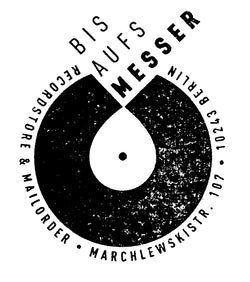Where Lucy and Lehmann have both established themselves individually in Melbourne’s rich music scene, their artistic congregation was delayed by their disparate musical backgrounds. Lucy, a classically trained musician and painter, enjoyed a childhood immersed in European classical music, story telling, and folk styles. Her solo work pays homage to these influences and aesthetically runs parallel to her acclaimed still-life paintings, evoking a sense of romanticism and otherworldliness stemming from everyday life. Lehmann’s musical resume spans credits with a number of heralded local indie outfits including Totally Mild, Pikelet, Grand Salvo, Laura Jean, and Kes Band. His discography, spread across twelve full-length LPs, emphasizes experimentation on the foundations of rock, folk, and vintage pop music and has made him a sought-after name for local artists and international acts alike, including Bonnie Prince Billy and Sonny & the Sunsets. Aware of each other's talents though not yet acquainted, it wasn’t until Lucy and Lehmann shared a bill together that they noticed their creative overlaps; their similarities and a mutual respect for one another’s fingerpicking styles, guitar preferences, and artistry inspired the potential for collaboration.
The outline of a project began to form as both Lucy and Lehmann traded old sketches of songs and homeless riffs, slowly coalescing into the world they would come to inhabit in Dark Green. Cherished recordings of woodwinds, deep YouTube obscurities, and wonky pastoral folk gems filled up their respective inboxes and inspired fresh angles in which to build anew on top of their older, unfinished works. In the Autumn of 2019, after two years of weaving together demos, Lucy and Lehmann made their way to a remote lodge in a small town along the Great Ocean Road known as Skenes Creek. There, among the verdant foliage and soothing rhythm of crushing waves, the bare bones of the album took form. Between tracking, editing, re-recording, and re-writing lyrics, the two found a sense of solace in the interminable quality of their retreat; the comfort of crackling fires, homemade meals, pots of tea, and walks on the beach breathing a palpable sense of closeness into each recorded take.
Thematically, the songs of Dark Green interchange between Lucy’s contemplations of love & loss, and Lehmann’s confrontation of one’s self in the face of life’s hardships, both explicit and abstract. The album plays out as two friends trading stories and sentiments late into the night, free of burden from the day, yearning for it to stretch longer still. It’s hard to pin down where or when these writings originate - some reflections seem recent whereas others echo from a distant past, or both at once. But spiritually, Dark Green impresses a feeling of welcomed nostalgia and achieves a level of kinship with its escapist origins: a place free of demand and the trappings of the day, beholden only to existing in the moment. As Lehmann aptly puts it: “We wanted to make a record that was outside of time, a magic document, a Voynich Manuscript you can listen to.”

